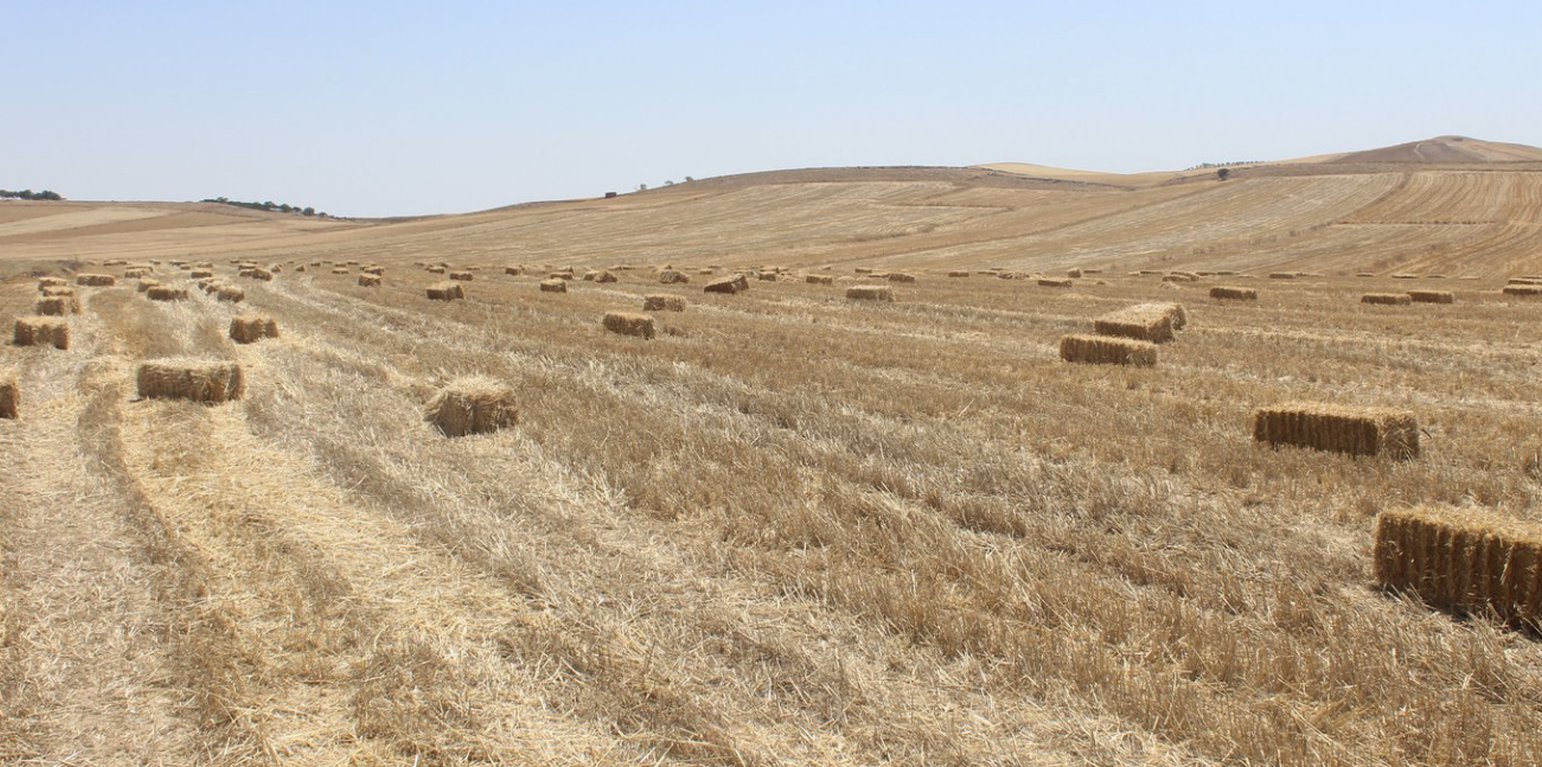



Land degradation leading to desertification is an increasingly important problem in the dry land regions of the globe. This does not only affect the bio-physical aspects such as carbon storage, but also the lives of local land users. Land degradation is often initiated by the lack of vegetation cover as is often a consequence of overgrazing and over-ploughing (i.e mismanagement). Furthermore, climate change leads to droughts, intensified rainfall events, increased temperature, and more extreme weather events. These compromised climatic conditions enhance land degradation. This leads to less fertile soils, reducing yields and consequently deteriorates the income and lives of local farmers. Taking the consequence and scale of degradation into account, natural resource conservation interventions are urgently required.
As the lack of soil cover is an, if not the, essential initiating factor in the desertification process, it should be maximally addressed. In the light of this, CA has been developed, based on three leading principles: i) minimizing soil disturbances or no-tillage, ii) maintaining a permanent soil cover with mulch, and iii) adequate crop rotations. Overall, the three principles prevent land degradation and can also rehabilitate the land. This is because soil organic matter is maintained in/on the soil and the erosive power of raindrops are broken by the soil cover. Therefore, CA aims for more sustainable resource use (land and water use) and to optimize climate-resilient and integrated crop-livestock systems to sustainably intensify production in fragile dry areas.
Tunisia is a country that experiences the previously described pattern and results of desertification and where smallholder farmers are largely dependent on livestock for income generation. However, the livestock competes with the concept of CA as plant residues (stubble) are normally grazed by the livestock. Conservation agriculture propagates no or minimum soil disturbance/ tillage. However, the purchase of a zero-tillage seeder machine appears to be a bottleneck due to high costs since they are hardly produced locally. Nevertheless, there are farmers in the semi -arid areas of Tunisia, who adopted the technology and experience significant benefits such as increased soil fertility and over time increasing yields. In addition, as erosion rates are high in this rainfed area of 300 to 600 mm annual precipitation, a well-covered soil will reduce runoff and loss of top soil. Since ploughing is restricted, the workload and the demanded fuel is reduced, resulting in decreased costs and labour with respect to the conventional practices. Furthermore, integrated crop-livestock is practiced by limiting livestock to graze only the freshly harvested fields while producing manure to enhance soil health (organic fertilization and increase in soil organic matter).
Additionally, according to the third principle of CA, legumes were introduced in the agricultural system (crop rotation), besides the conventional cereal (e.g. durum wheat or barley). Specifically, faba bean is promising, as it has nitrogen fixing effects, enhancing soil health, and increasing and diversifying farm income. Vetch and other forage mixtures have also been successfully introduced to provide farmers with nutritious feed for livestock within the CA concept. In irrigated areas (e.g. parts in Algeria), the practice of CA has an additional benefit as it increases the irrigation water use efficiency due to less evaporation and better infiltration.
The previous agro-pastoral farming practices changed under CA to an integrated crop-livestock system where soil cover is permanent. This mixed system consist of firstly weed control. Secondly, zero-tillage seeding is done directly into the soil even if covered with e.g. mulch/stubble. Faba bean and/or wheat are seeded and rotated yearly. This is beneficial as legumes fix nitrogen in the soil, lowering the amount of nitrogenous fertilizer needed. Thirdly, required fertilizers (for wheat additional nitrogenous fertilizer) is applied with a spreader. Fourthly, herbicides, pesticides, insecticides and fungicides are applied with a sprayer for disease control. Fifthly, the field is harvested with a combine. The stubble is then partly grazed by the sheep and goats until there remains a 1-2 cm residue layer i.e. mulch. For one hectare this accounts for a thirty day grazing period for thirty goats or sheep. This results in an integrated Crop-Livestock system under CA (CLCA), as the stubble provides feed for livestock while the livestock provides the soil with manure.
The land users that have adopted CA have indicated that they extremely appreciate the reduction in work, also the cost of labour and fuel, etc. In addition, they saw increased yields due to improved soil health. However, this beneficial impact could only be observed in the long-term since yields take time to increase, which can be considered as a weakness as the small holder farmer tends to prioritize short term profits. Another weakness is that the livestock is constrained since residues ought to remain on the field.
In conclusion, even though there are bottlenecks, the technology of conservation agriculture is a solution to combat desertification while improving the lives of local land users through the process.
Information and data presented is partly made available through the project “Use of conservation agriculture in crop-livestock systems (CLCA) in the drylands for enhanced water use efficiency, soil fertility and productivity in NEN and LAC countries” funded by the International Fund for Agricultural Development (IFAD), managed by the International Center for Agricultural Research in the Dry Areas (ICARDA) and implemented in Tunisia by the National Agricultural Research Institute (INRAT).
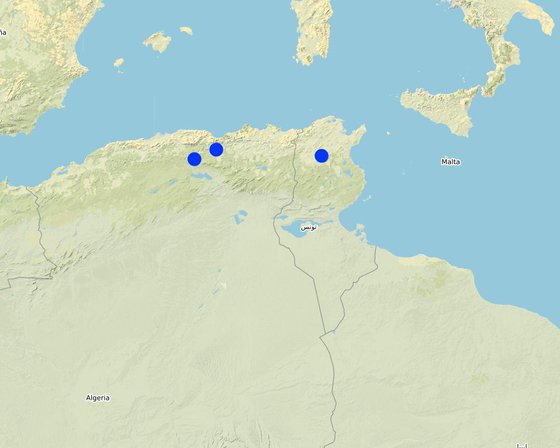
الموقع: Algeria: M'Sila and Setif; Tunisia: Siliana, تونس
عدد مواقع تنفيذ التقنيةالتي تم تحليلها: 100 - 1000 موقع
انتشار التقنية: منتشرة بالتساوي على مساحة (approx. 1,000-100 كم2)
في منطقة محمية بشكل دائم؟: كلا
تاريخ التنفيذ: 1999
نوع التقديم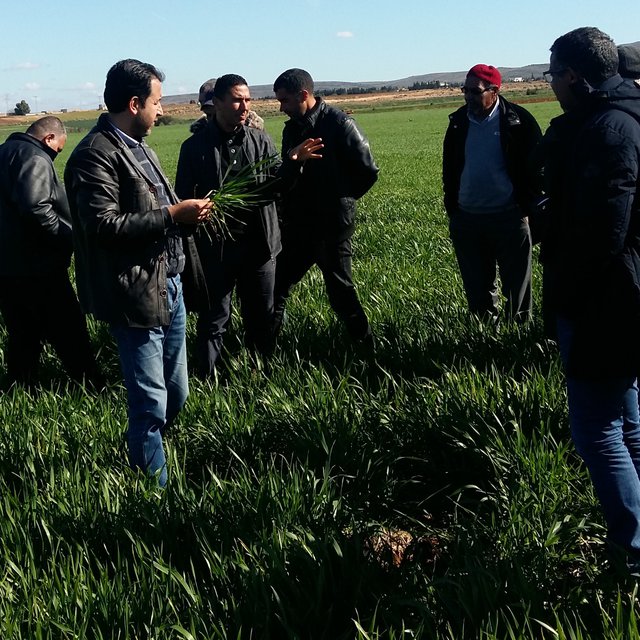
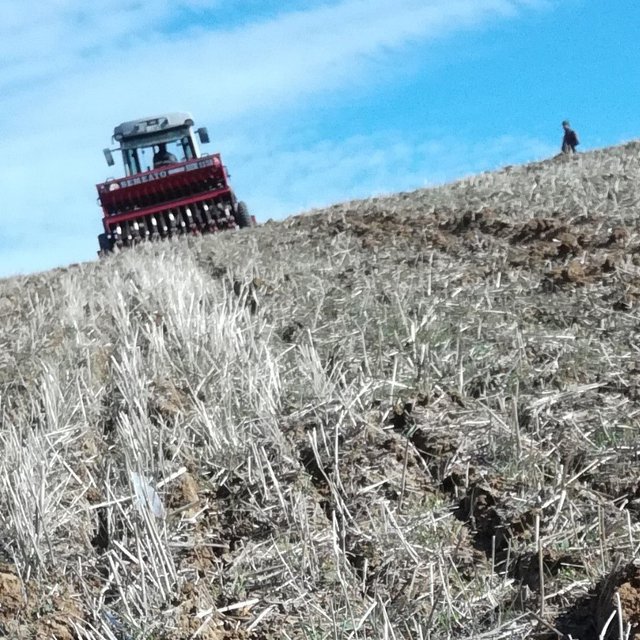


| الصنف | العدد |
| الماعز | غير متاح |
| الأغنام | غير متاح |








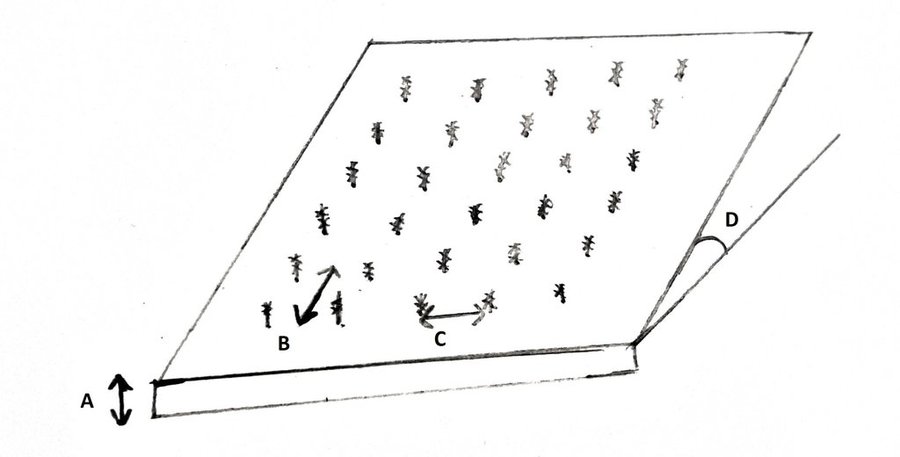
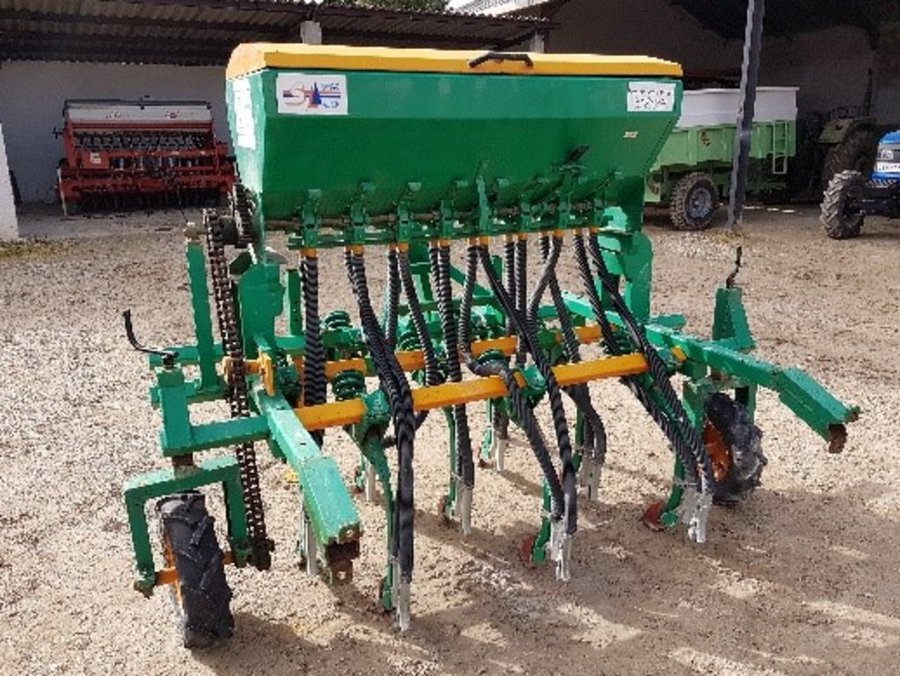
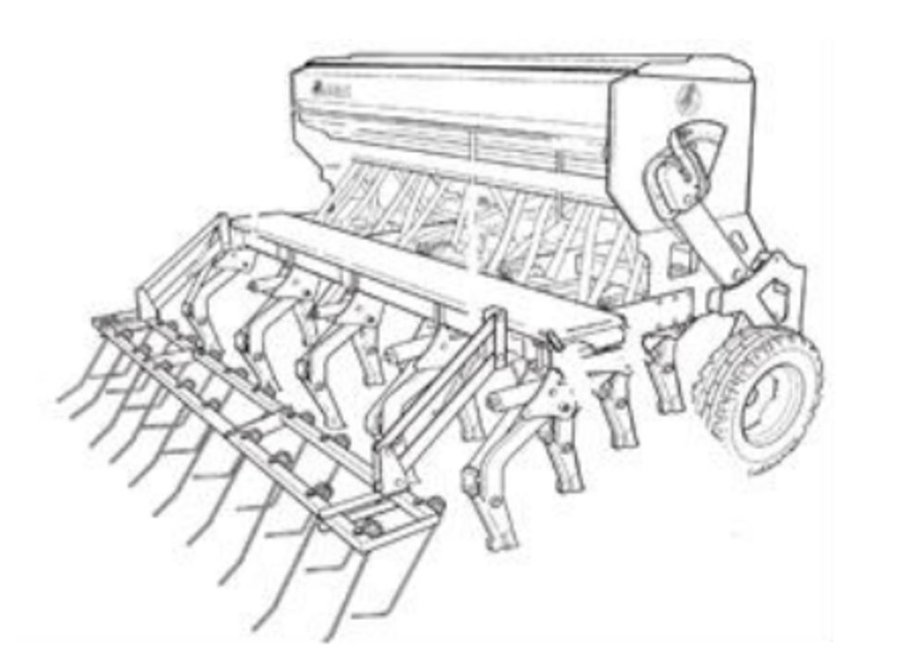
| تحديد المدخلات | الوحدة | الكمية | التكاليف لكل وحدة (دولار أمريكي USD) | إجمالي التكاليف لكل مدخل (دولار أمريكي USD) | % من التكاليف التي يتحملها مستخدمو الأراضي |
| معدات | |||||
| Zero-Tillage Seeder | piece | 1,0 | 20000,0 | 20000,0 | |
| إجمالي تكاليف إنشاء التقنية | 20'000.0 | ||||
| إجمالي تكاليف إنشاء التقنية بالدولار الأمريكي | 20'000.0 | ||||
| تحديد المدخلات | الوحدة | الكمية | التكاليف لكل وحدة (دولار أمريكي USD) | إجمالي التكاليف لكل مدخل (دولار أمريكي USD) | % من التكاليف التي يتحملها مستخدمو الأراضي |
| العمالة | |||||
| Weeding | Person-hour | 1,0 | 100,0 | ||
| Seeding | Person-hour | 2,0 | 100,0 | ||
| Fertilizer Application | Person-hour | 0,5 | 100,0 | ||
| Harvesting | Person-hour | 2,0 | 100,0 | ||
| معدات | |||||
| The Zero-Tillage Seeder (hiring cost) | Machine-hour | 2,0 | 16,5 | 33,0 | 100,0 |
| Sprayer (hiring cost for disease control) | Machine-hour | 4,5 | 11,0 | 49,5 | 100,0 |
| Spreader (hiring costs for nitrogenous fertilizer application) | Machine-hour | 1,5 | 11,0 | 16,5 | 100,0 |
| Combine (hiring cost for harvesting) | Machine-hour | 2,0 | 47,5 | 95,0 | 100,0 |
| المواد النباتية | |||||
| Seeds Wheat | Kilogram | 160,0 | 0,4 | 64,0 | 100,0 |
| Seeds Faba Bean | Kilogram | 120,0 | 0,48 | 57,6 | 100,0 |
| الأسمدة والمبيدات الحيوية | |||||
| Baseline Fertilization | Quintal | 2,5 | 19,9 | 49,75 | 100,0 |
| Nitrogenous Fertilization | Quintal | 3,0 | 15,5 | 46,5 | 100,0 |
| Pesticide (for total weed control) | Liter | 2,0 | 10,0 | 20,0 | 100,0 |
| Herbicide for grassy weeds | Liter | 1,0 | 41,2 | 41,2 | 100,0 |
| Herbicide for broadleaf weeds and sedges | Liter | 2,0 | 29,2 | 58,4 | 100,0 |
| Fungicide | Liter | 1,5 | 40,0 | 60,0 | 100,0 |
| Herbicide for annual and perennial grasses | Liter | 1,25 | 25,5 | 31,88 | 100,0 |
| Insecticide | Liter | 0,1 | 66,8 | 6,68 | 100,0 |
| غير ذلك | |||||
| Casual Labour | Person-day | 12,0 | 5,3 | 63,6 | 100,0 |
| إجمالي تكاليف صيانة التقنية | 693.61 | ||||
| إجمالي تكاليف صيانة التقنية بالدولار الأمريكي | 693.61 | ||||
Over time the crop production increases as the soil quality increases
Over time the crop quality increases as the soil quality increases
Less fuel needen for ploughing. This was a signficant cost in the conventional system.
The farm income increases as there are less costs and higher yields with respect to the previous agricultural acitivites.
Farmers spend less work on the field as the field is not ploughed.
Less water runs off due to soil cover. Thus more water is collected in the soil.
Due to the soil cover, more water is retained and less water runs-off.
The soil cover provides shade for the soil. Therefore less water is evaporated.
The soil is more moist as the soil cover provides shade. So the soil has a lower temperature.
CA strives for permanent soil cover.
The soil cover breaks the erosive power of rain drops. Also due to decreased run-off, there is less erosion.
The soil cover eventually decomposes into the soil which lead to accumulation.
The splash erosion of the rain drops is broken by the soil cover, resulting in less crusting.
The soil cover is decomposed in the soil. Which is partly carbon.
CA encourages the use of adequate crop rotation.
CA encourage the use of beneficial species like legumes that fixate nitrogen.
As conservation agriculture reduces erosion, it consequently reduces downstream siltation.